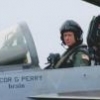Screaming Eagle Upgrade (310 HP with Scimitar Prop)
-
Members Online
- M20F
- acekng1
- shawnd
- hypertech
- DXB
- Rick Junkin
- donkaye, MCFI
- Jarerh
- TangoTango
- PT20J
- C.J.
- Pinecone
- BillyT0020
- A64Pilot
- RoundTwo
- EricJ
- Jetpilot86
- Paul Thomas
- mlafayette
- PFish
- tailgator
- Probst Aircraft Tooling
- redbaron1982
- Jeff Uphoff
- hammdo
- 201er
- christaylor302
- Nico1
- jlunseth
- mike_elliott
- 00-Negative
- JoeM
- alextstone
- larryb
- Joe Linnebur
- Phil EF
- hazek
- Willpool101
- GoDemonDeacons
- K_AWA


Recommended Posts
Join the conversation
You can post now and register later. If you have an account, sign in now to post with your account.